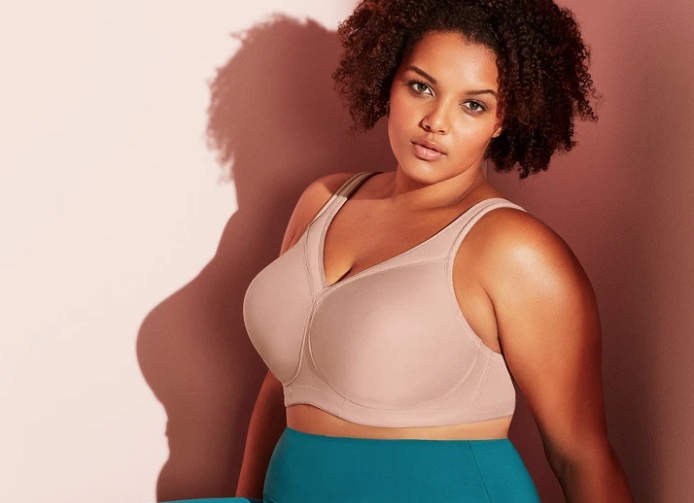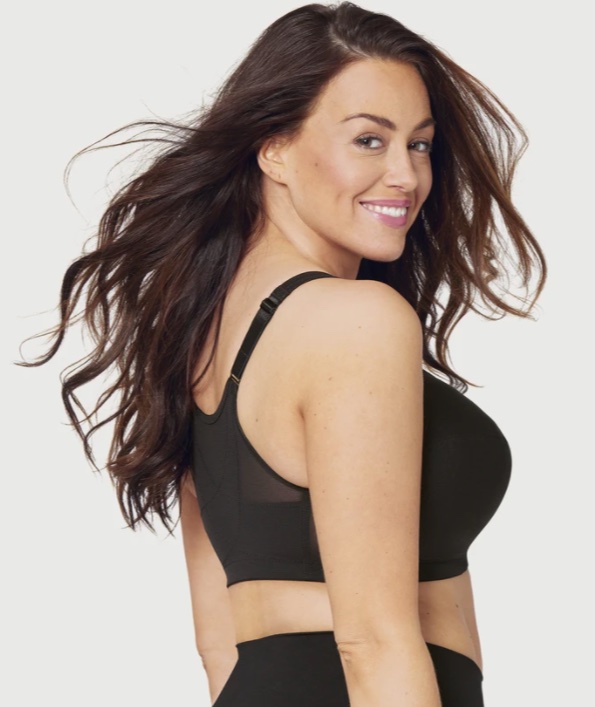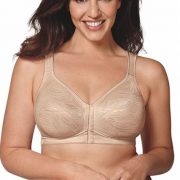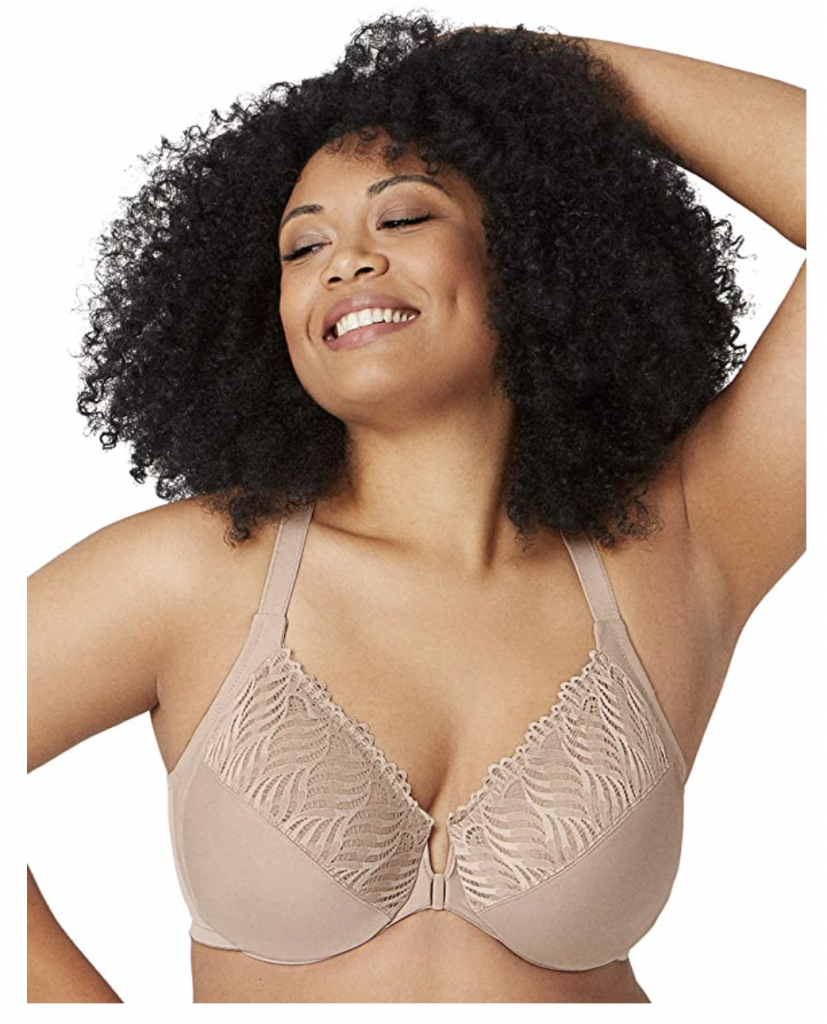Finding a supportive bra that fits well can be a frustratingly difficult task for most ladies. With most ladies lacking the right knowledge about support features I thought it’d be a good idea to write this blog on the top features to look for in a supportive bra.
⚡️ Tip: Take a screenshot of the dot points below and save it in your phone for when you’re out bra shopping.
Features in a supportive bra
- Quality materials that wont give or stretch quickly
Stretch is the arch enemy of support. If the material gives quickly then it has no chance of stabilising breast tissue. Check the stretch in the cups, the stretch in the straps and the stretch in the band that runs around the ribcage. They need to have *some* give, but we don’t want these to be overly stretchy.
- Strong, wide shoulder straps
Shoulder straps that aren’t elastic for the entire length of the strap are always a good idea. And if they are fully elastic, just check that the elastic seems solid and not flimsy and easy to stretch. While the shoulder straps aren’t in a bra to take the weight of the breast we do rely on them as a secondary means of support and they need to be strong in order to work for us (not against us!).
- Adjustability features
With wear and tear (and washing cycles!) materials in a bra will start to give a little and will lose some shape. As this happens we want to be able to adjust the bra inwards in order to counter-act the stretched fabrics and maintain support. This is also the case for shoulder straps. Multiple points of adjustability in a bra are ideal.
- Full coverage cups
In order for a bra to support our breast tissue we really want the breasts to stay in the cup. Choosing a full cup bra will help stabilise the breast tissue during daily living and exercise. Of course, nailing the cup fit is also very important to get this right. Most women wear a cup size too small – remember that 😉
- Produced in band and cup sizes
You can have the most supportive bra in the world but if it doesn’t fit you it won’t be any good, or very supportive, at all. Very few women are perfectly in proportion, making XS, S, M, L etc bras a good option for very few people. Choose brands that produce their bras in band and cup sizes ag 34G or 42C so that you can find a bra that fits perfectly around the ribcage and the cups. Read on to find out why this is uber-important!
How to spot an unsupportive bra that won't last long
The biggest design floor to be aware of in bras is super stretchy fabric. Material that can’t resist stretch to some degree will definitely not be able to resist the movement of breast tissue during the day. Of course, we need some give in the fabric, but too much stretch is a sure sign the bra won’t last.
Secondly, a bra that doesn’t have a lot of room to adjust can be a sign of concern. Some bras are designed well enough to mean they can get away with no adjustment points, but in general most brands aren’t capable of this sort of design. If there is no adjustability and the product is cheap, it’s likely you should be weary.
Lastly, a bra (or brand!) that is promising the world with innovative new technologies may well be better at marketing than they are at designing bras. Avoid bras going “viral” on facebook ads. There is a much greater chance these will fail you than succeed for you
Why it's important that your bra fits you
If you’ve read this post of mine, you’ll understand that in order for a bra to support you it NEEDS to fit you.
In short (please read the article linked above 
I strongly recommend taking your measurements to have a good idea of what size you should be working. The button below will take you to my instructions on how to measure your bra size.
What happens if you don't wear a supportive bra
Without adequate breast support most women will report significant discomfort across the chest and back, with most issues relating to the upper back. A lack of breast support can slowly cause changes in posture too.
It’s common for women to worry about their breasts sagging if they don’t wear a proper supportive bra. The industry believes that sagging (or breast ptsosis) will be a long term effect of unsupported breasts, however the science can’t yet prove this. We certainly do know that the natural support structures in the breast, the skin and coopers ligaments, are both weak and realistically need the aid of a bra.
From an exercise and sport perspective, lots of women who can’t find an adequate breast support solution will simply opt out of working out all together. A study in the UK found that 17% of women reported breast support as their biggest barrier to activity.
"I find supportive bras uncomfortable". What should I do?
Unfortunately due to a lack of quality bra fittings and education available a lot of women across the globe are so used to wearing badly fitted bras that the transition to a well fitted bra can be uncomfortable.
If this is you, you have two options. Firstly, you can say “it’s too hard” and continue wearing poorly fitted bras that in turn will cause discomfort, back aches and shoulder pain. Or secondly, you can work on slowly transitioning to better fitting bras grinning and bearing your way through the mild discomfort that comes with making such a change until you get used to it. Taking slow steps to better bras will help soften this, and for most people is absolutely doable.
For example. If you are used to wearing loose sloppy bras that are way too big to offer reasonable support then you may adjust your bra fit by one size at a time instead of the (let’s say) the 3 sizes that you really need to change. This is a common path that I take for customers that struggle wearing a bra that fits well. And it’s a much better idea than just throwing in the towel and opting out. To be more specific if you are used to wearing a 42C but your bra fitter thinks you should be in a 14F then you would move to a 40DD as your first step and then a 38E on your next step and finally end up in the 36F when you are used to a firmer fitting bra.
Some of my favourite Supportive Bras
More of our most loved articles

Bra causing back fat? How to Fix it.
Back fat, bra bulge, back wings – whatever you call them, I know what you mean. As a Bra Fitter I am often asked “Are

Best Front Closure Bralettes for all sizes
As a Bra Fitter, I have trouble recommending bralettes to women as there is often a compromise in support. But this article is going to

Can Bras Cause Thoracic Outlet Syndrome? Bra Strap Syndrome.
Neurogenic thoracic outlet syndrome (TOS) – the kind that involves your nerves – makes up more than 90% of all this condition’s cases. And, unfortunately,

Breast shape types – What is a normal breast shape?
We know women struggle finding the right size bra. But what’s less commonly talked about, is women understanding what breast shape type they are and

Can bras cause bad posture? A Bra Fitter’s guide.
It’s not just an old wives tale. Wearing the wrong bras or bras that are poorly fitted can cause bas posture. In this article I’ll

How to become a professional Bra Fitter
So you want to become a Bra Fitter? Well done you! It’s a really rewarding career and I am personally thrilled you’re looking in to
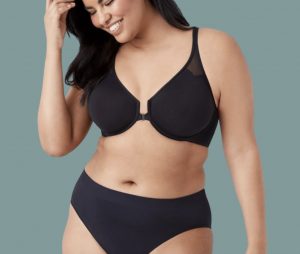
Body by Wacoal Racerback Underwire Bra Review – Front Closure
Simplicity is the key with this Wacoal Front Closure Bra, loved by not just me, but the thousands of ladies that adore the Wacoal range.

The real Benefits of Wireless Bras
As a Bra Fitter one of the most common myth’s I bust (on the daily!) is that all women need to wear underwire bras. With
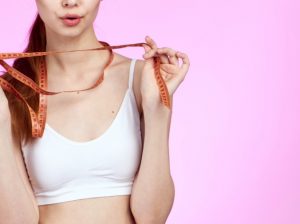
How often should you get a bra fitting?
Wondering “how often should you get a bra fitting?”… I can help. As an experienced Bra Fitter I have the inside scoop on when and

